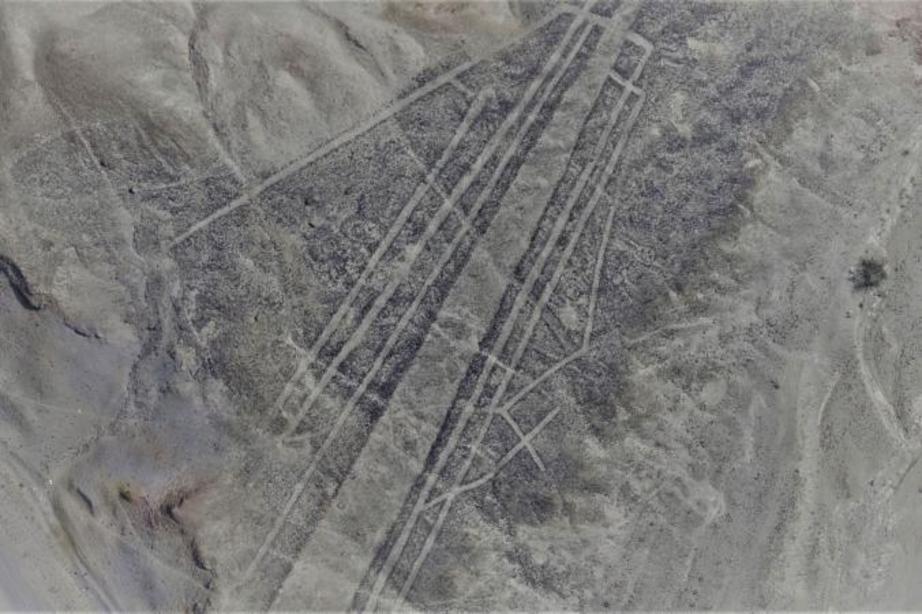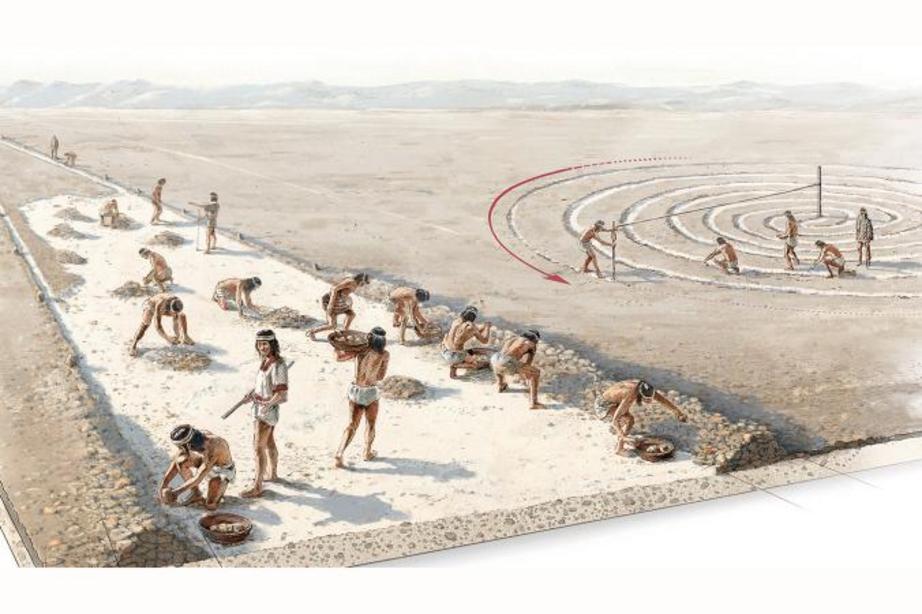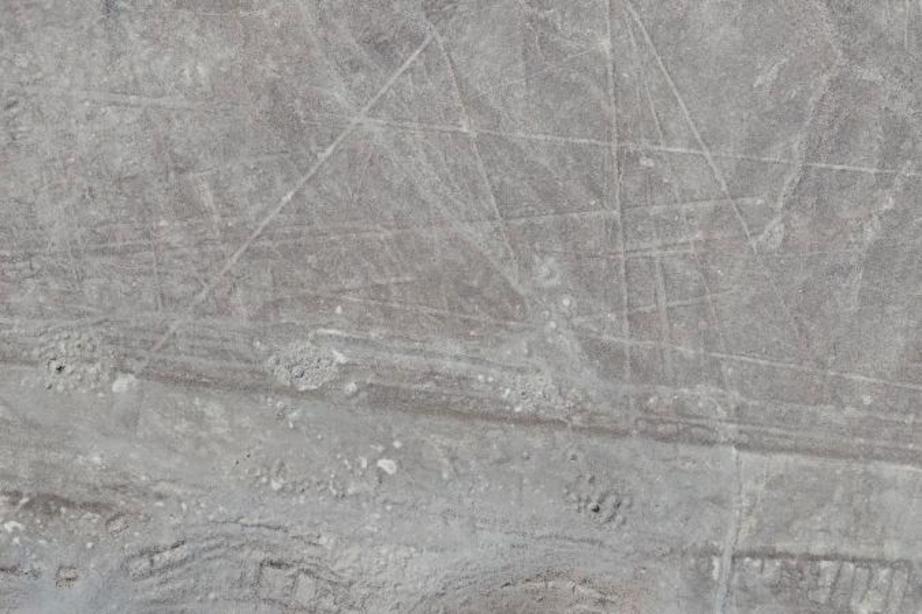Massive ancient drawings found in Peruvian desert
Armed with satellites and drones, archaeologists discover new Nasca lines and dozens of other enigmatic geoglyphs carved into the earth.
Etched into the high desert of southern Peru more than a millennium ago, the enigmatic Nasca lines continue to capture our imagination. More than a thousand of these geoglyphs (literally, 'ground drawings') sprawl across the sandy soil of Nasca province, the remains of little-understood ritual practices that may have been connected to life-giving rain.
Now, Peruvian archaeologists armed with drones have discovered more than 50 new examples of these mysterious desert monuments in adjacent Palpa province, traced onto the earth's surface in lines almost too fine to see with the human eye. In addition, archaeologists surveyed locally known geoglyphs with drones for the first time—mapping them in never-before-seen detail.
Some of the newfound lines belong to the Nasca culture, which held sway in the area from 200 to 700 A.D. However, archaeologists suspect that the earlier Paracas and Topará cultures carved many of the newfound images between 500 B.C. and 200 A.D.
Unlike the iconic Nasca lines—most of which are only visible from overhead—the older Paracas glyphs were laid down on hillsides, making them visible to villages below. The two cultures also pursued different artistic subjects: Nasca lines most often consist of lines or polygons, but many of the newfound Paracas figures depict humans.
“Most of these figures are warriors,” says Peruvian archaeologist Luis Jaime Castillo Butters, the new glyphs' co-discoverer. “These ones could be spotted from a certain distance, so people had seen them, but over time, they were completely erased.”
A View From the Sky and Space

Many of the newly discovered Nasca lines are too faint to be seen by the human eye, yet visible when captured in low altitude by a drone camera. Photograph courtesy Luis Jaime Castillo, Palpa Nasca Project
The new geoglyphs add crucial data on the Paracas culture, as well as the mysterious Topará culture, which marked the transition between the Paracas and the Nasca. Centuries before the famous Nasca lines were made, people in the region were experimenting with making massive geoglyphs.
“This means that it is a tradition of over a thousand years that precedes the famous geoglyphs of the Nasca culture, which opens the door to new hypotheses about its function and meaning,” says Peruvian Ministry of Culture archaeologist Johny Isla, the Nasca lines' chief restorer and protector.
Ironically, the discovery of the new geoglyphs was only made possible because of threats to previously known Nasca lines.
In December 2014, the environmentalist group Greenpeace staged a protest mere feet from the famous Nasca “hummingbird,” damaging the area. In the resulting furor, Peru received a grant from the U.S. to help hire Isla and his restoration team.
Isla's work is extraordinarily difficult, and made even harder by spotty maps. Of the estimated 100,000 archaeological sites in Peru, Isla's colleague Castillo says only about 5,000 have been properly documented on the ground. Even fewer have been mapped from the air.

Ancient Peruvians created geoglyphs like the Nasca lines by moving stones to define edges of the lines, and then scraping the top layer of earth between the edges to reveal lighter soil. beneath. ART by FERNANDO G. BAPTISTA/NGM STAFF source: markus reindel, german archaeological institute
Castillo, a professor at the Pontifical Catholic University of Peru and the country's former vice-minister of cultural heritage, has long championed using drones and other aerial mapping techniques to catalog archaeological sites. Now, Isla and Castillo have much more data to work with, thanks to National Geographic Explorer and “space archaeologist” Sarah Parcak.
After winning the TED Prize in 2016, Parcak founded the GlobalXplorer initiative, which trains citizen scientists to analyze satellite imagery for archaeological sites and signs of looting. The platform's first project invited volunteers to look at satellite photos of Peru. (Read more about the illegal antiquities trade—and how governments are fighting back.)
“When we were thinking about countries to go to ... it had to be a country that everyone in the world would know is important, where the Ministry of Culture would be open to new technology, and where most of the sites would be out in the open and fairly easy to detect,” says Parcak, an archaeologist at the University of Alabama at Birmingham. “Peru definitely fit the bill.”
Hiding in Plain Sight

This newly discovered Nasca line feature, captured by a drone, consists of several straight lines with no discernible pattern which were likely made at different times and for different purposes. Photograph courtesy Luis Jaime Castillo, Palpa Nasca Project
Once GlobalXplorer volunteers flagged potential targets in the satellite data that may be potential archaeological sites or instances of looting, Parcak then turned the target locations over to Peruvian archaeologists. With the support of the Sustainable Preservation Initiative, Castillo and three of his students embarked on a ground-truthing expedition funded by the National Geographic Society.
When Castillo's team visited Nasca and Palpa provinces in December 2017, they didn’t find much evidence of fresh looting at the GlobalXplorer candidate targets. Instead, they found decades-old looting sites and encroachment fueled by the region's booming illegal gold mines.
But when researchers photographed the sites from overhead with drones, they found something new—and unexpected. The high-resolution images contained hints of dozens of ancient geoglyphs, carved into the desert crust.
How could so many geoglyphs hide in plain sight? Over time, many of the lines and figures have been reduced to faint depressions in the soil, visible only on 3-D scans of the terrain captured by the eagle-eye perspective provided by drones. And despite satellites' awe-inspiring surveillance power, they can’t see everything.
The most powerful satellite that GlobalXplorer uses can see a foot-wide object from 383 miles above Earth's surface. That’s the equivalent of seeing a single human hair from more than 650 feet away. But the lines that trace the newfound geoglyphs are mere inches across—too fine to spot from space.
Low-flying drones operating at altitudes of 200 feet or less, in contrast, can spot objects less than a half-inch wide. “The [drone camera] resolution is incredibly high,” says Castillo.
More to Discover, More to Protect
Now that researchers have documented the newfound lines, they're eager to protect them. The new geoglyphs fall within the UNESCO World Heritage Site encompassing the Nasca and Palpa lines, and according to Isla, they are not under immediate threat.
However, the newfound lines have yet to be registered with the Peruvian Ministry of Culture. The lines' co-discoverer, Fabrizio Serván, a student at the Pontifical Catholic University of Peru, says that the necessary maps and drawings are currently being drafted.
Perhaps the lines will soon have company. GlobalXplorer users have flagged hundreds of new potential sites that Peruvian archaeologists will continue ground truthing this fall and winter.
“The data and information obtained with the GlobalXplorer project are extraordinary in quality and quantity, and above all in a relatively short period of time,” says Isla. “This puts us at the forefront in the registry of archaeological sites and geoglyphs in particular.”
“We give the data to local experts: This is their cultural patrimony, they're the stakeholders,” says Parcak. “We're providing a resource.”
In the future, Parcak and Castillo say that GlobalXplorer data can help protect archaeological sites from unplanned urban and rural encroachment, which, beyond looting and the occasional errant truck driver, is by far the biggest threat facing Peru's geoglyphs.
Castillo describes the ongoing encroachment as “land trafficking”: a sophisticated effort within Peru to forge deeds and build illegal housing by the acre, erasing the country's cultural heritage in the process.
“We're not fighting a looter with his shovel, running away when you're blowing a whistle; we're fighting an army of lawyers,” he says. “This is a constant battle, so the work we're doing—documenting the sites, geo-referencing—is the best protection we can give the sites.”
Video can be accessed at source link below
